The 16 best places to visit in Morocco

After spending several months wandering around and discovering the country, I have made a list of my favourite places: Whether you are looking for cultural sites, beautiful sandy beaches or unspoilt nature, Morocco has everything that you want! Enriched by several centuries of history, the Kingdom has a beautiful historical and architectural heritage that you can discover on the road to the Imperial cities: Rabat which is the capital city, Marrakech, Fez and Meknes. Most of them are encircled by ramparts and have lively Medinas and colourful souks. More into relaxation? Head for the Atlantic coast and its long beaches of fine sand. Between the modern city of Agadir and Essaouira, which are both the perfect spot for water sports, Morocco can be proud of its beautiful sea resorts and big fishing ports which are crucial for the local and National economy. Are you looking for astonishing landscapes? The country is full of natural sites suitable for hiking. With its incredibly varied landscape, there is something for everyone: trekking in the sand dunes of the Sahara, escapades to meet with the Berber people in the desert, hikes in the Atlas Mountains, walks in the heart of the green palm groves... Not without mentioning the generous and rich Moroccan cuisine and its welcoming population, always keen on sharing its culture and treasures of their regions.
Tourist attractions
Our selection of must-see places
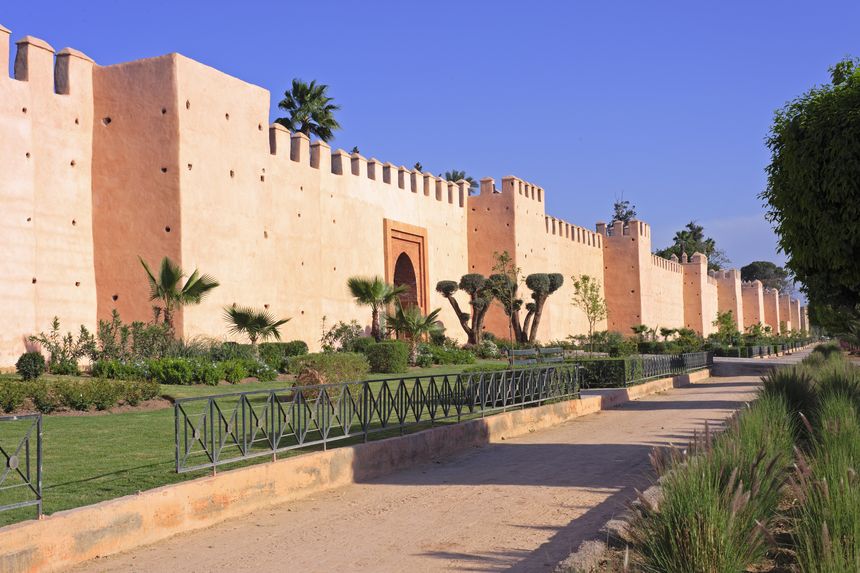

Marrakesh
A traditional and contemporary city, Marrakech seduces many visitors thanks to its numerous assets. 3h35min by plane from London, it's easily accessible and a perfect weekend destination. With the Atlas mountains in the background, the city and its different neighbourhoods are filled with treasures. Vibrant and calm, electric and serene at the same time, everyone will find what they are looking for and will be charmed by the atmosphere of the city, whether it be by the picturesque alleys of the Medina, the Historic city centre and its ramparts, the lush gardens of Majorelle and Menara, or the trendy shops in Guéliz, which is the modern district in the city. Further north, the Palm Grove is ideal for quad biking or camel rides. Generous and mesmerizing, Marrakesh is just reaching out to you.
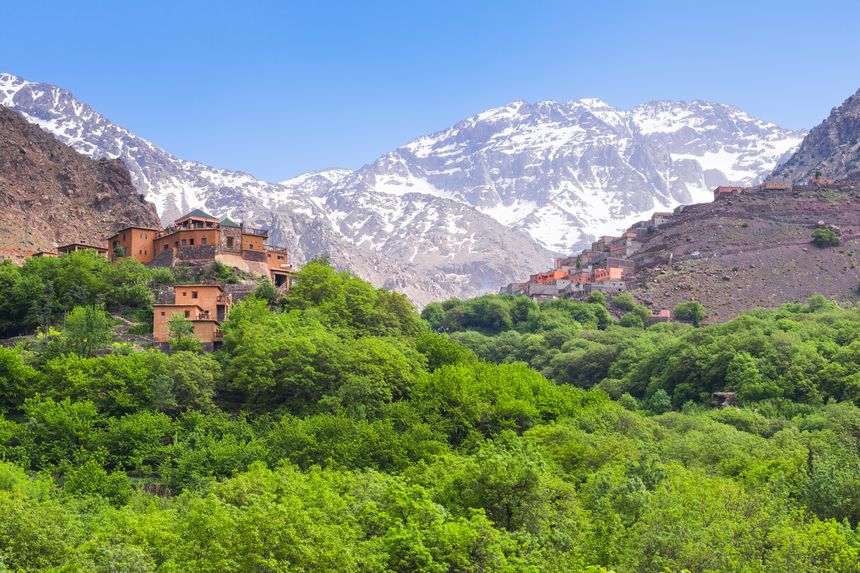

The Atlas
Morocco is characterized by a large variety of landscapes.
Between dunes and beaches, the relief is also marked by the Atlas mountain range in the northern part of the country. The highest peaks in North Africa are located in the High Atlas region, they offer incredibly rich landscapes and will delight hiking and trekking lovers.
Between verdant forests, arid valleys, snowy crests and vast plateaus, the region is dotted with routes and paths which allow travellers to discover a different Morocco, off the beaten track.
Among all the must-see places you shouldn't miss out on is the valley of Ourika, close to Marrakesh, which will bring you on a journey through a natural and unspoilt environment, alongside the Berber tribes. The Atlas region is enriched by large National Parks such as the Toubkal and Souss Massa National Parks. In the region, you can also go to the M’Goun massif if you’re into winter sports, this ski resort is a delight for all skiers.
Further south in the region known as the Anti-Atlas, very pleasant hiking trails are accessible from the city of Taroudant. Here, the High mountains have given way to oases, crop fields, waterfalls and streams.
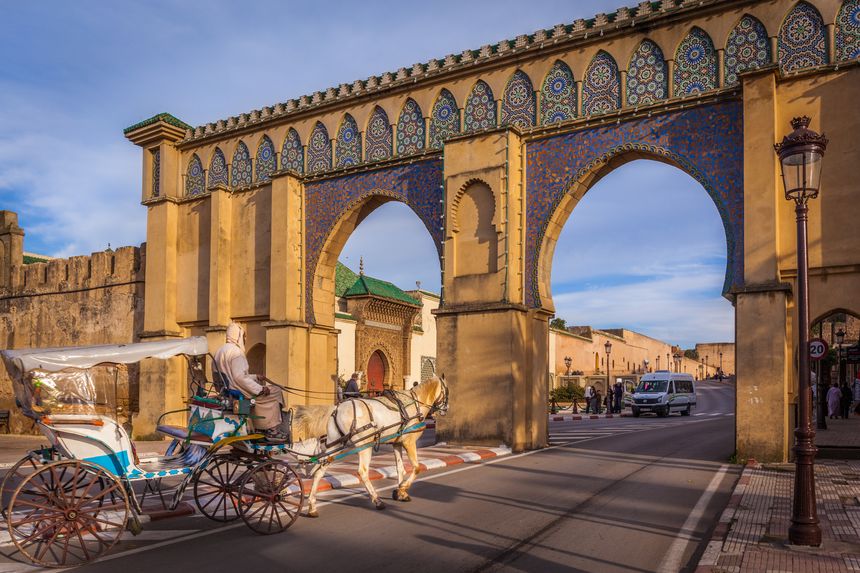

Meknes
On the road to the imperial cities of Morocco, you must stop off in Meknes which is one of the most beautiful. Founded in the 8th century, it is surrounded by ramparts and monumental gateways, its architecture and historical heritage are quite unique, inherited from the great Moroccan dynasties which succeeded one after the other throughout the centuries (Idrisid, Almoravid, Marinid and Alawites). This exceptional heritage makes it a UNESCO World Heritage site
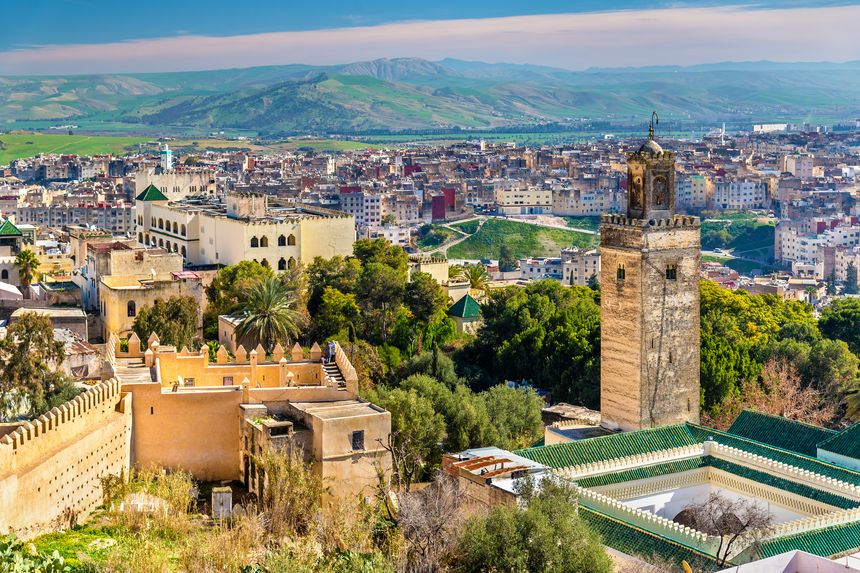

Fez
Fez is without any doubt one of the most beautiful imperial cities of Morocco, with its specific atmosphere and authentic architecture, many purists consider it to be the “ the most genuine Moroccan city”. The old town is listed as a UNESCO World Heritage site and is home to an important cultural heritage, shared between traditional Souks, museums and Medersas (Koranic schools).
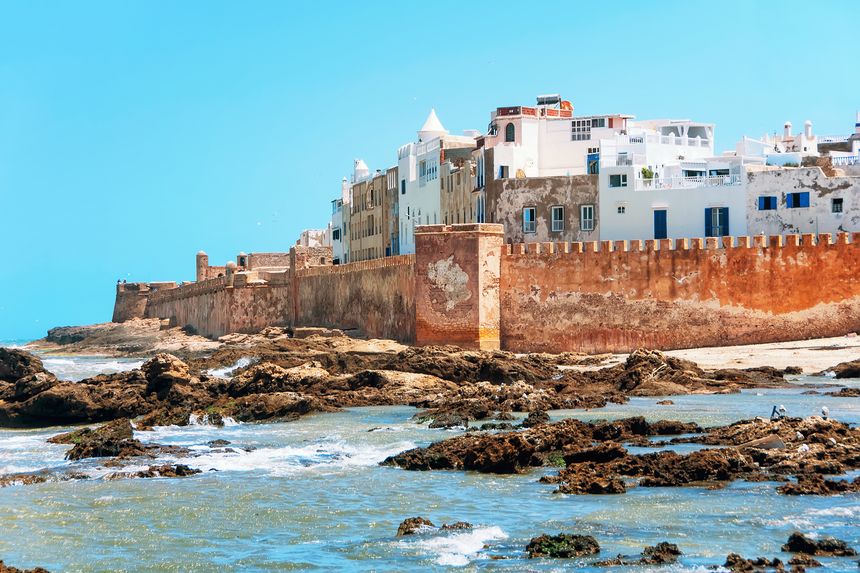

Essaouira
A nice sea resort on the Atlantic coast, Essaouira has sunny weather all year round which enables you to relax on its superb beaches. However, due to strong winds now and again on the coastline, swimming is not always possible, even though the city is without any doubt a haven for surfers and other water sports enthusiasts who love windsurfing or kitesurfing. Essaouira is the host for the Kite-Surf World cup every year. But the city is also known for its bright white Medina and its historical centre surrounded by ramparts listed as UNESCO World Heritage.
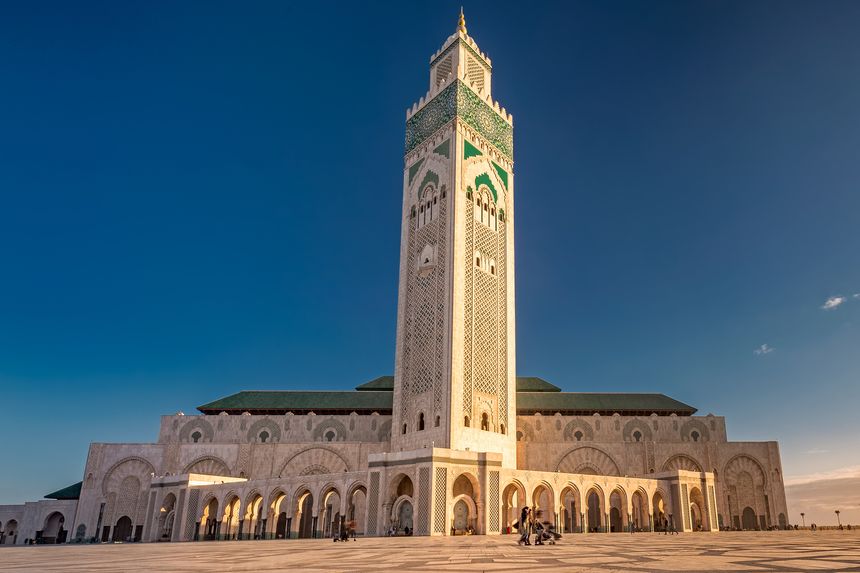

Casablanca
The harbour city of Casablanca is attracting less tourists than other coastal cities such as Agadir or Essaouira, even if it's the economic capital of Morocco. Nevertheless, there are still plenty of tourist attractions worth visiting there. Cosmopolitan and dynamic, Casablanca is a perfect blend of both Arab and European influences.
On the one hand Moorish architecture and on the other Art Deco architecture, all combined in the same city. If you’re into shopping, you could either go to the traditional central market or else the ultra-modern Morocco Mall, the largest shopping centre in Africa!
In addition to its historical city centre, the city also has a large business centre.
At nightfall, "Casa" offers its party-goers and night owls a plethora of trendy bars, restaurants and clubs to party until dawn.
The Hassan II Mosque is a very popular attraction in Casablanca. Partially built on the sea, this impressive building seems to float on the water. This large religious and cultural complex of 9 hectares holds a record: it is one of the largest mosques on the planet with a Minaret that measures 210 metres high, the highest in the world.
But don't be mistaken, its traditional architecture is actually a technical feat designed with a sunroof.
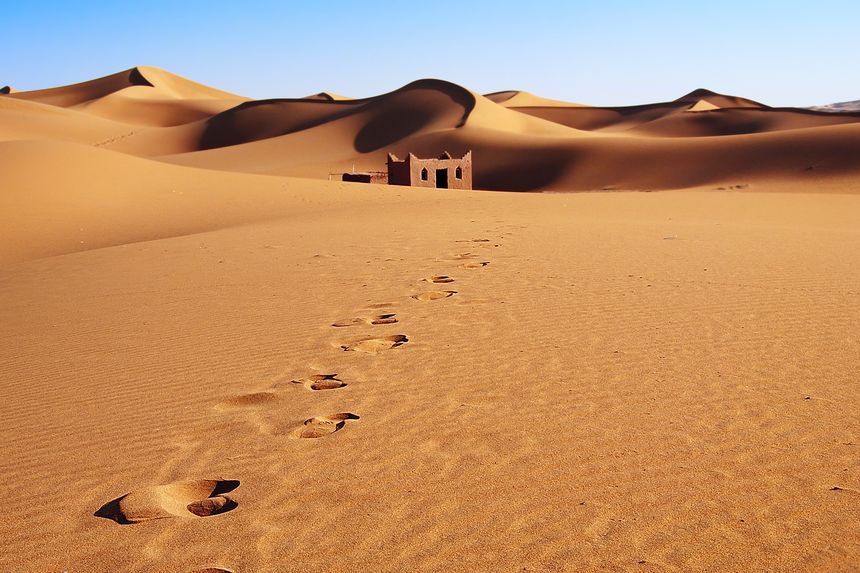

Erg Chebbi dunes
This region, located close to the Algerian border, has the largest concentration of the highest sand dunes in the Sahara. People looking for wide-open spaces and stunning nature will be delighted by this unique setting and fabulous landscapes. Some of the dunes reach up to 150 metres high, you will be impressed by the astounding colours of the surroundings that you can admire once you reach the top, particularly during sunset and sunrise. All trekking and expeditions to explore this marvellous natural site start from the village of Merzouga. Lead by an experimented local guide, the first option (and the least harmful for this fragile environment) is to go there on camel-back. For a thrilling experience, rent a quad bike, buggy or a 4x4, but be careful not to drive on the dunes but between them in order not to damage them! For a completely amazing experience both during the day and night, it is highly recommended to spend the night in the dunes, to bivouac under the stars and gaze at the Milky Way.
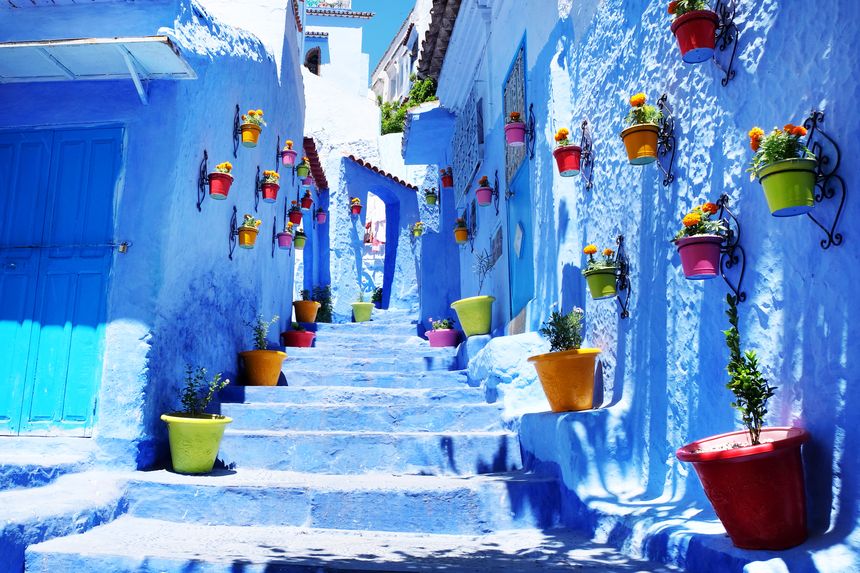

Chefchaouen
This village is the perfect image of a Moroccan postcard you would love to receive. Situated in the north-east of Morocco, this mountainous village is intriguing and well known because of its faded blue entirely coloured houses. A stroll through the narrow streets of Chefchaouen almost takes us to an imaginary fairyland and a total change of scenery. In the heart of the Medina, the small winding streets are filled with carpets, fabrics, herbs and spices, woven baskets and other craft objects. This inviting village also has a number of interesting historical monuments to see. The central square Outa El-Hammam planted with trees is the daily meeting place for tourists and locals, who can admire the terracotta walls of the old Kasbah from one of the terraces. Not far from here lies the Great Mosque, which you can only admire from outside as the entrance is restricted only to Muslims.
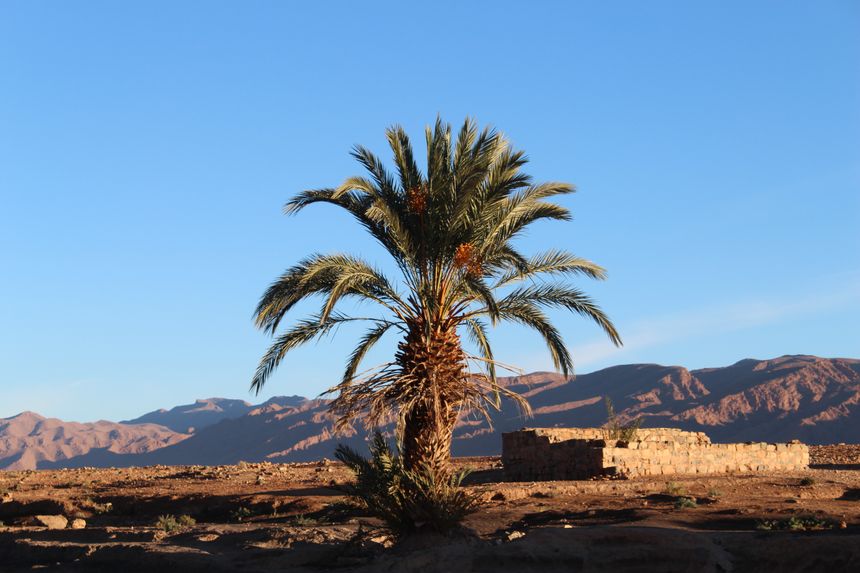

Figuig
Located in the extreme East of the country near the Algerian border, Figuig is an oasis of freshness lost in the middle of the desert and surrounded by mountains. Roughly 12,000 people live in the city, which remains quite unknown to tourists due to its remoteness to major Moroccan cities. The calm that reigns there, makes it feel like time has stopped, and that you're in a different world. The vast palm grove, which is one of the most beautiful in the country, with an abundance of fruit trees, including 200,000 date palm trees, which are vital for the local economy. Figuig has also preserved a rich architectural heritage with seven traditional Ksours, a group of fortresses that once served as protection to the city. Isolated from the outside world, Figuig really does deserve its title of the “Pearl of the desert”.
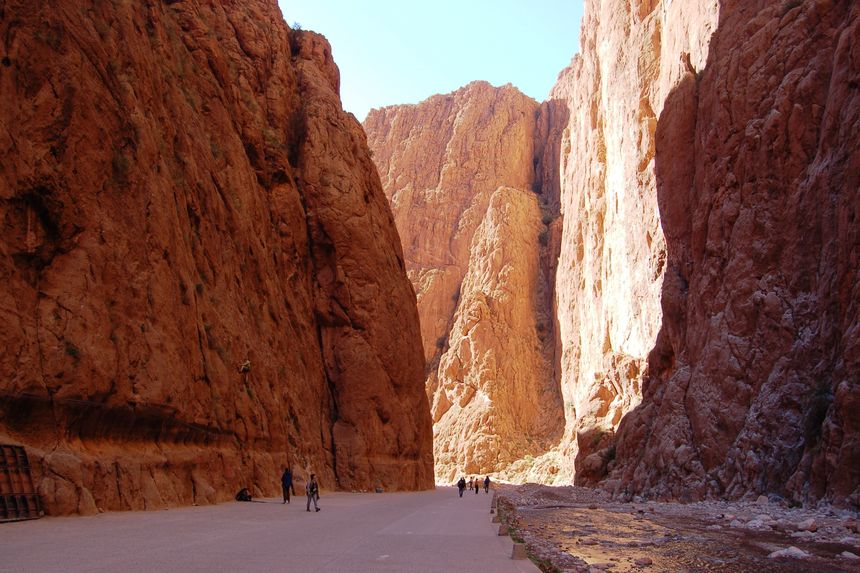

Dades Gorges
68 miles East of Ouarzazate lies the Moroccan Grand Canyon: the Dades Gorges. These vertiginous canyons of almost 300 metres deep are the ideal playground for hikers, rafting lovers and climbers On your way to the gorges, the landscapes alternate between green plains, orchards, and mountainous areas glowing under the sun. Nearby the village of Boulemane, a geological curiosity attracts many visitors: peculiar rocky peaks which seen to rise into the sky, called the “Monkeys’ fingers”. Further on , the Sidi Boubkar canyons are the starting point of hiking trails which lead to natural pools. The perfect occasion for a relaxing moment in this paradisical setting.
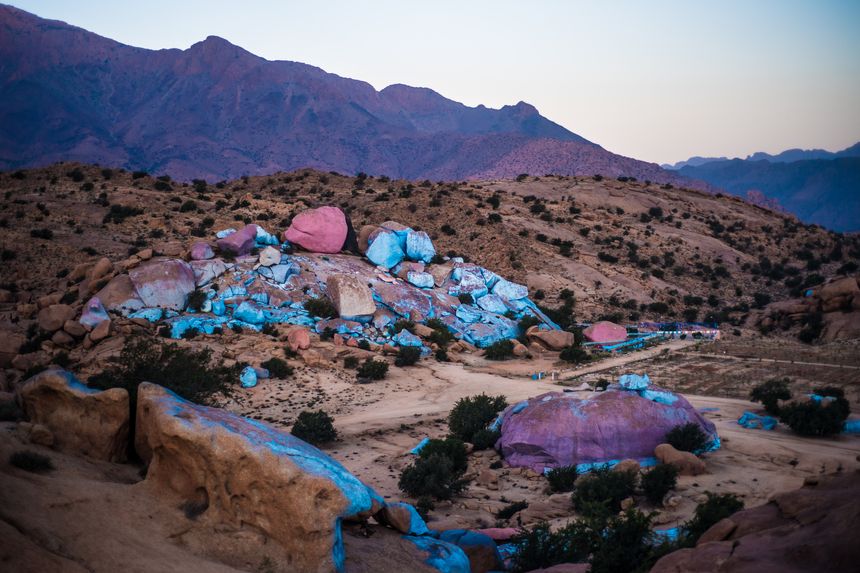

Tafraout
99 miles south of Agadir, Tafraout is a city built on the granitic foothills of the Anti-Atlas, 1200 metres above sea level. It overlooks a vast palm grove with almond trees, date palm trees, argan trees and olive trees. This little mountainous village with its typical Berber architecture is the departure point for many beautiful excursions to the surrounding natural sites and other villages: The majority of the villages are located in the verdant valley of Ammeln. On the road to Tiznit, you should stop to see the famous bowed red rock in Agard-Oudad, which is called “Napoleon’s hat”, along with the intriguing blue painted rocks in Aoumerkt. A land art created by the Belgian artist Jean Vérane. Finally, hiking lovers can venture into the stunning Ait Mansour Canyon. The trail which can be done by 4X4 will give you another perspective of the region, its magnificent landscapes, steep rocky cliffs and verdant oases.
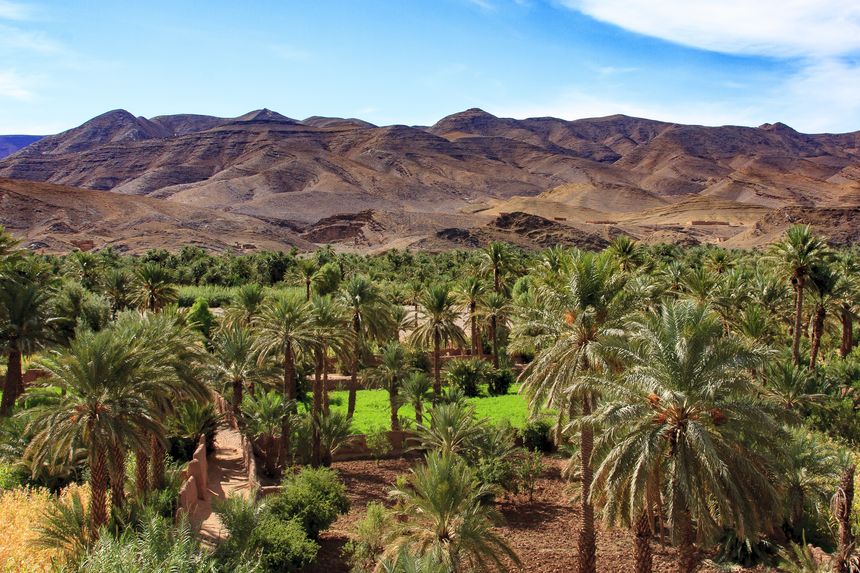

Draa Valley
Starting from Ouarzazate, the Draa Valley stretches over 125 miles in a long fertile crescent in the middle of arid land, where Berber villages, historical fortifications, oases and lush palm groves are irrigated by waterfalls. Between the cities of Agdz and M'Hamid via Zagora, several routes are possible for a trek to discover the landscapes of the valley cradled by the Oued Drâa, the longest river in Morocco. But the region is also dotted with Kasbahs and Ksours made out of Pisa mud, witnesses of its historical past.
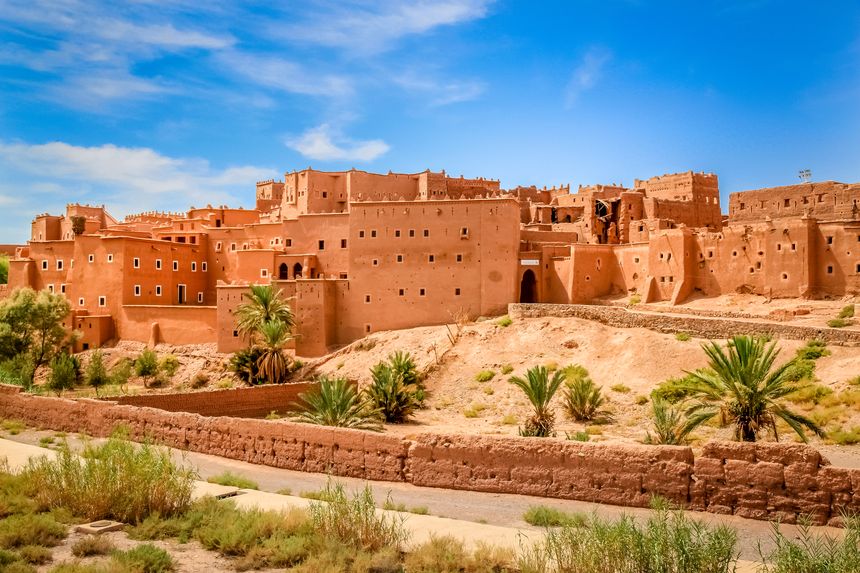

Ouarzazate
At the desert’s gate, at the meeting point of the Draa and Dades valleys, Ouarzazate is located on a vast rocky plateau, dotted with oases and flamboyant red coloured villages. Bathed in light all year round, the city with its constant luminosity regularly serves as a setting for cinema productions. Many cult films such as Gladiator, Lawrence of Arabia, Babel were filmed here, transforming the city into a Moroccan Hollywood.
But apart from the film studios, Ouarzazate also has important historical sites, including its many Kasbahs, not to mention the wide choice of excursions that are possible in the desert, the green valleys and the surrounding palm groves.
Taourirt Kasbah
Four centuries old, the Kasbah of Taourirt is the city's emblem. One of the very first large-scale Berber constructions, the Kasbah looks like a sand castle with its high walls and crenellated towers, the only difference being is that its foundations seem to be indestructible
Overlooking the Medina of Ouarzazate, it's possible to visit the sumptuously decorated Kasbah's interior which was once inhabited by a Moroccan high ranking dignitary.
The cultural interest of the Kasbah of Taourirt is such that the monument was classified as a UNESCO World Heritage Site a few years ago. For your information, the Kasbah of Taourirt is the monument that is represented on the 50 dirham banknote.
The Tizi n’Tichka mountain pass
Winding along the slopes of the High Atlas, is a road which links Marrakesh to Ouarzazate over a distance of about 125 miles. By car, you pass by landscapes which are are constantly changing. From snow-covered peaks to green plains, steep passes, to oases and small Berber villages nestled in the mountains.
The highest point is the Tizi-n-Tichka Pass at 2260 metres, offers an impressive panoramic view.
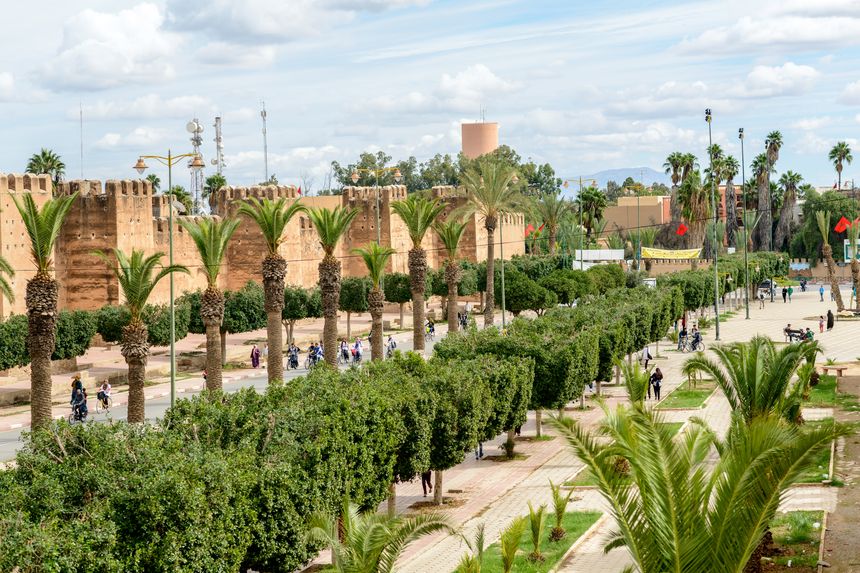

Taroudant
In the heart of the Souss valley, in the south of Morocco, the charming city of Taroudant, which is removed from the tourist fervour of Marrakesh or Agadir, will delight travellers looking for authenticity.
Between the sea and the mountains of the Anti-Atlas, the city benefits from an ideal location and offers its visitors a beautiful range of nature excursions. But before heading off to explore its surroundings, the city itself is also one of Morocco's oldest cities, needless to say, it’s absolutely steeped in history!
Such as the Medina, nicknamed the “little Marrakesh”, with its ochre coloured ramparts that encircle the city and protect it. 4 miles long, this huge wall has 9 different entry doors.
Bab El Kasbah, the oldest one, offers a beautiful view of the Kasbah and the gardens of Taroudant. You should visit the Souks as soon as you go through one of the many doors. The city has two Souks :
The Artisanal Souk where typical Moroccan products and crafts are sold. It's a regional pride, where you can find for instance the famous Argan oil, renowned for its nutritional and cosmetic virtues or the Saffron spice, which is nicknamed here as "red gold".
The Berber Souk is colourful and a joyful mixture of diverse items such as everyday life products, food, clothes, crockery, drug store products, toys...which literally
overflow from every shop and stall.
The Tizi-n-Test road
This tourist route links the cities of Marrakech to Taroudant and is nearly 111 miles long. Recommended for experienced hikers only, the route will take you through a beautiful variety of landscapes: the vast Kik plateaus, the mountainous flanks of the Atlas, or the N'Fis canyon which is a refuge to a few Berber villages. After several days of intense hiking, you will receive your reward : a breathtaking view of the Souss valley from the Tizi-n-Test pass, which culminates at over 2000 metres. From there, Taroudant can be easily reached in about 1h30.
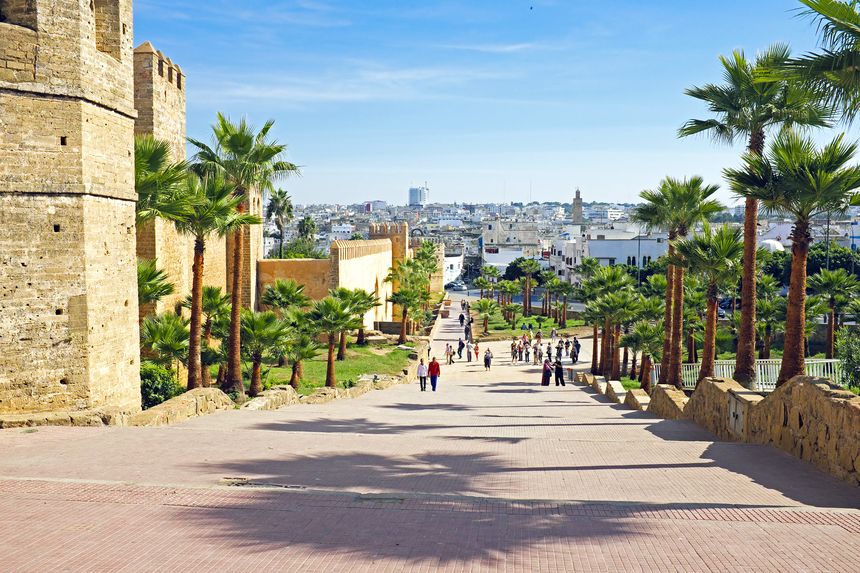

Rabat
Built on the Atlantic coast and on the banks of the Bouregregreg River, Morocco's capital has everything to please: miles of coastline between sandy beaches and rocky coves, a countryside characterized by unspoilt nature that is suitable for hiking, and finally a vast cultural heritage influenced by the different civilizations that were part of its construction and development. Protected by an impressive walled enclosure, the Rabat Medina is home to several essential historic sites classified as UNESCO World Heritage Sites as Cultural Heritages. The construction of a new European inspired district has also added a touch of modernity to the city.
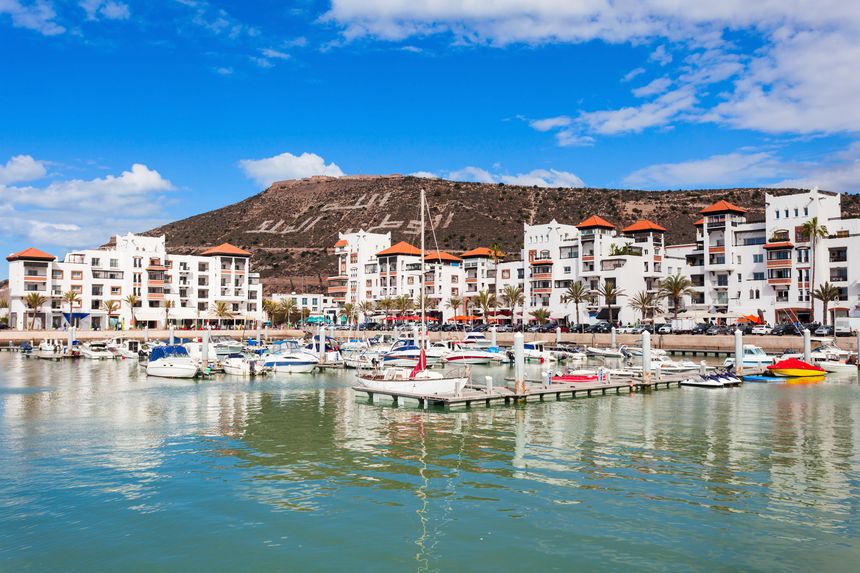

Agadir
On the road to the imperial cities of Morocco, you must stop off in Meknes which is one of the most beautiful. Founded in the 8th century, it is surrounded by ramparts and monumental gateways, its architecture and historical heritage are quite unique, inherited from the great Moroccan dynasties which succeeded one after the other throughout the centuries (Idrisid, Almoravid, Marinid and Alawites). This exceptional heritage makes it a UNESCO World Heritage site.
You may also like
-
Flights to Morocco
All you need to know before buying your plane ticket
-
Tourist maps
Region, attractions and distance map Morocco!
-
Hotel or vacation rental?
Find your dream accommodation in Morocco at the best price...
-
When to go?
Be sure to visit Morocco at the best time of year!
and why not...
 Portugal
Portugal




